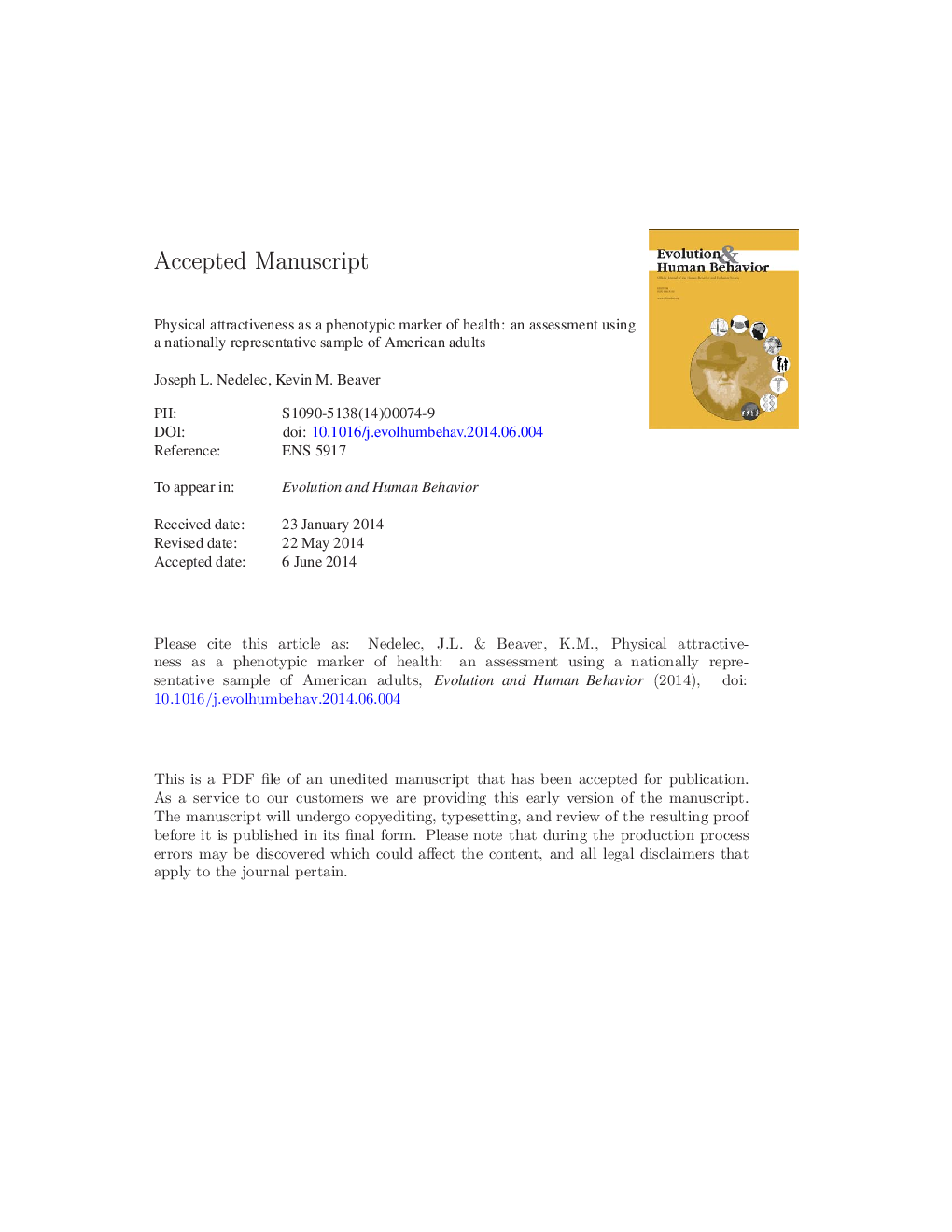| Article ID | Journal | Published Year | Pages | File Type |
|---|---|---|---|---|
| 10464030 | Evolution and Human Behavior | 2014 | 35 Pages |
Abstract
Evolutionary explanations regarding the differential preference for particular traits hold that preferences arose due to traits' association with increased potential for reproductive fitness. Assessments of physical attractiveness have been shown to be related to perceived and measured levels of health, an important fitness-related trait. Despite the robust association between physical attractiveness and health observed in the extant literature, a number of theoretical and methodological concerns remain. Specifically, the research in this area possesses a lack of specificity in terms of measures of health, a reliance on artificial social interactions in assessing physical attractiveness, and a relatively infrequent use of non-student samples and leaves unaddressed the confounding effects of raters of attractiveness. Using these concerns as a springboard, the current study employed data from the National Longitudinal Study for Adolescent Health (N â 15,000; aged 25 to 34 years) to assess the relationship between physical attractiveness and various specific and overall measures of health. Logistic and OLS regression models illustrated a robust association between physical attractiveness and various measures of health, controlling for a variety of confounding factors. In sum, the more attractive a respondent was rated, the less likely he or she was to report being diagnosed with a wide range of chronic diseases and neuropsychological disorders. Importantly, this finding was observed for both sexes. These analyses provide further support for physical attractiveness as a phenotypic marker of health. The findings are discussed in reference to evolutionary theory, and the limitations of the study and future research suggestions are also addressed.
Related Topics
Life Sciences
Agricultural and Biological Sciences
Ecology, Evolution, Behavior and Systematics
Authors
Joseph L. Nedelec, Kevin M. Beaver,
